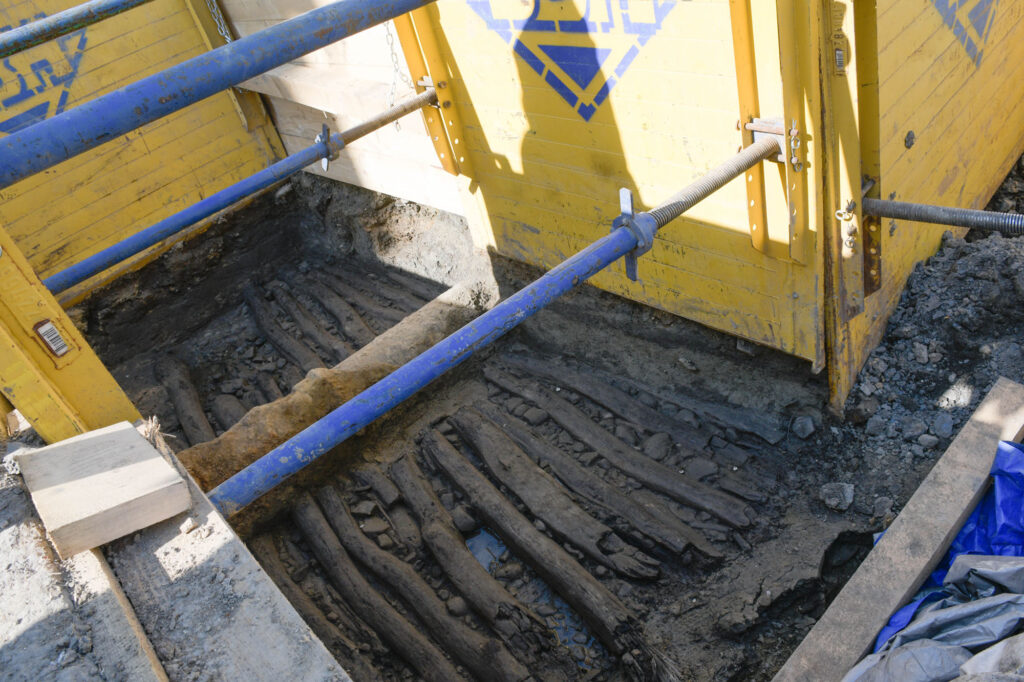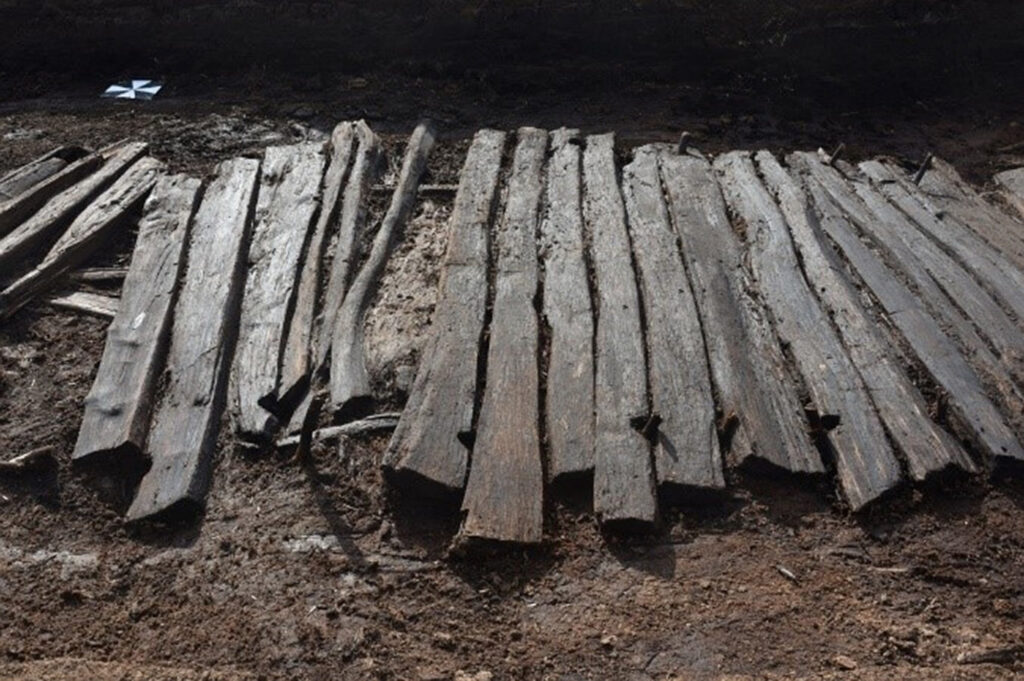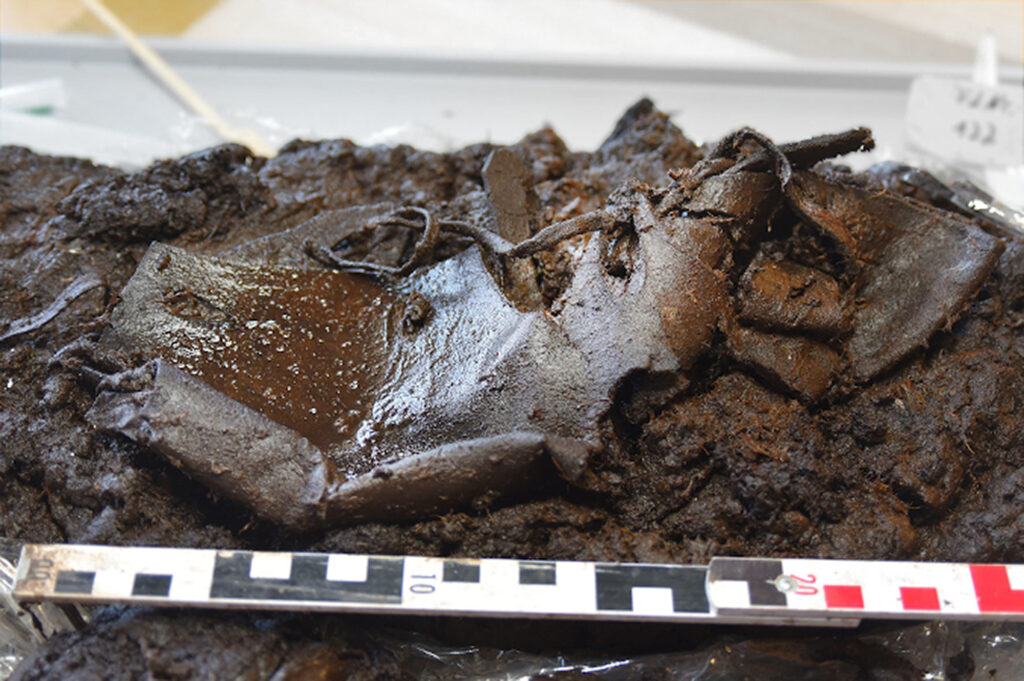Archaeologists Discover 2,000 Year Old Shoe On Late Bronze Age Wooden Path In Germany
A shoe that was pulled off when the owner stood in a German bog 2000 years ago has been found during excavation work on an ancient wooden walkway through German marshland.
Researchers from the State Office for Monument Preservation (NLD) in Lower Austria along with the excavation company ‘denkmal3D’ from the city of Vechta in Germany found the shoe on a wooden road which they believe is over 2,000 years old.
The wooden planks have been laid down to help people make it through the marshland, and as well as the shoe, a broken axle was found, making archaeologists believe that while changing it for a new one, the owner lost their shoe in the boggy ground, where it remained until it was found now.

The shoe, which is the oldest ever found in Northern Germany and possibly in the whole country as well, was discovered on the edge of the ancient Bohlenweg Pr 6 wooden path in the district of Diepholz.
Bohlenweg Pr 6 was a prehistoric road made out of wooden planks laid one behind the other over a length of four kilometers between the towns of Lohne and Diepholz in Germany.
The road that was estimated to be at least 2000-years-old and dates back to the late Bronze age was discovered in the Lower Saxonian moorland in June 2019.
The excavation of the road is carried out by NLD and ‘denkmal3D’ and is funded by the European Regional Development Fund (ERDF).
The practice of using wood particular the marshy land was well known but there are few examples left as time passed, with modern roads being built over them, or they would simply rot away.

Interestingly, only recently workers rebuilding the city of Dortmund’s heating network uncovered another rare example in the form of a 1000-year-old wooden road 1.8 metres (5.9 feet) below Kaiserstrasse Street and the Ostwall road following the old city walls in May 2021.
In this case the road, which was used in the Middle Ages to allow wagons to cross swampy areas, survived because it had been buried under a layer of clay.
The researchers involved in the excavations of the 2000-year-old road now believe that the acidic conditions of the bog where the shoe was found allow for the preservation of materials such as skin, hair, nails, wool, and leather which all contain the protein keratin.
They also explained that other shoes previously discovered in the region were made at least several decades or centuries earlier than their newest find.

The State Office for Monument Preservation reported on Monday that the shoe which is a type of sandal, is closed at the front and decorated with a leather strap and was made with great craftsmanship.
Additionally, the archaeologists also discovered an axle from a broken wagon and other wagon fragments near the location where the shoe was found.
They assumed the shoe owner was travelling inside the wooden wagon which was presumably pulled by cattle on the Bohlenweg Pr 6 road when the axle broke.
The researchers suspect that while trying to recover the wagon parts, the shoe owner could have fallen or stepped next to the wooden road while his shoe got stuck in the mud and remained there for over 2,000 years.

Lower Saxony’s Minister of Science and Culture Bjorn Thumler said: “Lower Saxony’s moorlands hold the testimonies of several thousands years of history. They are a unique archive as they have not only preserved processed pieces and metal objects, but organic finds too.”
He added: “A shoe that is lost and found again after 2,000 years, the oldest shoe from Lower Saxony to date, is an immensely personal testimony to a previous life.”



